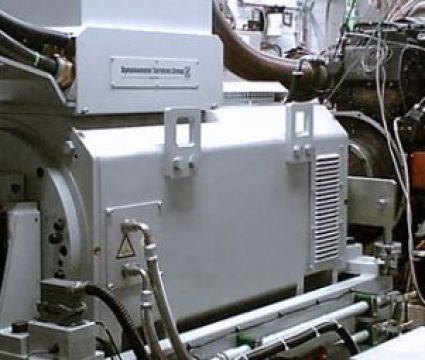
Line Regeneration
The drive uses a sinusoidal pulse-width-modulated (PWM) inverter for full regeneration to the three-phase power grid. Regenerated power has a unity power factor due to the strict regulation of current output to the mains. The drive produces power compliant with IEEE 519 when used in conjunction with Unico’s line regenerative filter.
NVH Configurable
The drive can be configured for ultra-quiet operation using the built-in dual current regulators. It is ideal for applications where sound measurements of the test specimen are required. Unico’s NVH capabilities have been used in both anechoic and hemianechoic test cells.
Inertia Simulation
Unico’s dynamometer drive provides internal inertia simulation. The inertia simulator can simulate both fixed and dynamic inertias using either internal inertia models or an external real-time command from another controller.
Closed-Loop Torque Control
The torque control loop can be closed internal to the drive without requiring any additional hardware to the system. The drive can also close the torque loop on an external torque transducer while using the internal torque estimator feedback at the same time. This provides the accuracy of the torque transducer while gaining the responsiveness of the torque estimator.
Quadrant Control
The drive has full four-quadrant operation with the ability to limit or block operation in any of the quadrants. This allows operation to be matched to the application, since many engines can never be run in reverse. Additionally, the drive can limit the power in both motoring and regenerating modes. Overview Features
Quadrant Limiting
Many engines can never be run reverse. The drive incorporates internal quadrant limiting that can be set for either full or partial blocking, depending upon the application.
Torque Foldback
Typical drives shut off if they operate above their RMS limits for too long a period. The torque foldback feature allows the Unico drive to reduce its torque to a level that it can maintain indefinitely. This can save the engine from costly runaway conditions that can occur when other drives shut off.
CASMA Filter
The CASMA filter provides a comparison of the cylinder-to-cylinder contribution to the overall engine output. Additionally, an accurate acceleration feedback signal is also provided.
Engine Starter
The dynamometer drive is ideal for starting engines. The drive can be run in velocity mode to drive the engine, then switch automatically to regeneration mode when the engine kicks over. Partial engine firing and high-torque spikes are no problem. The drive will continue to run until the engine is fully running.
Bumpless Transfer
The drive smoothly switches from speed mode to torque mode and back using a controlled transition. Programmable ramp rates for both speed and torque provide exceptionally smooth mode transitions.
Catch a Spinning Load
For systems that require the dyno to start up while the engine is already running, the catch-a-spinning-load feature is ideal. When the drive is turned on, the controller automatically synchronizes the current of the drive to the speed of the engine and smoothly applies the commanded load without glitches.
Torque Estimator
A torque estimator eliminates the need for expensive and mechanically complicated torque-measuring devices. Using motor currents and voltages, the estimator calculates motor electrical torque, which can then be translated, if the appropriate inertia and friction information has been provided, into the torque that would be measured by an in-line torque transducer. The torque estimate can be output as an analog signal that can replace load cells in many applications. The torque estimator functions down to zero speed.
Deadweight Calibration Software
For systems that rely on the torque estimator to provide a measure of motor torque, the drive provides the ability to deadweight calibrate the torque estimator output. Deadweight calibration is done by loading an arm attached directly to the motor shaft with calibration weights.
Standard Serial Interface
The drive control module provides a serial interface that allows monitoring of drive screens and changing of parameters from a remote terminal. Many different serial protocols are available for communicating to programmable controllers, personal computers, external control systems, and data-acquisition systems.
High-Speed Serial Interface
An optional high-speed serial interface provides the ability to communicate with the drive using high-speed networks such as EtherCAT, Profibus, ControlNet, Ethernet, Modbus Plus, Modbus TCP, Remote I/O, DeviceNet, CanBus, LonWorks, and Interbus-S.
Standard Analog Interface
The drive provides as standard three analog inputs and two analog outputs for external commands and feedback.
Fast Stop
A fast stop feature quickly decelerates the drive to a stop when an emergency stop is pressed.
High-Speed Fiber-Optic Interface
An optional high-speed fiber-optic interface allows real-time synchronous control of the drive. Commands and feedback can be communicated to and from the drive in real time. All inputs, outputs, and setup parameters can be accessed through the fiber-optic link. Advantages include full optical isolation, full 16-bit data communications without loss of resolution due to noise, elimination of noise-related drift problems, and synchronous sampling of data within the drive.
Power Ride-Through
The power ride-through option allows a dynamometer to continue to operate or shut down safely in the event of a power failure. Specifically designed for areas where power may be unreliable due to storms or generation and transmission problems, power ride-through lets the system function even if three-phase is completely disconnected. The feature averts potential runaway conditions that can occur when operating at full power.
Motoring Capabilities
Fully regenerative dynamometers can have anywhere from 75% to 100% motoring capabilities.
Non-Regenerative Dyno
For installations where power cannot be regenerated onto the mains due to utility company policies or power-line capacity limitations, Unico offers a version with full absorption capabilities and zero line regeneration.
Modular Design
The modular design of the drive allows individual components to be selected and sized for each application. Inverters for running motors and for use as line regenerative front ends are fully interchangeable, thus reducing the size of individual components and the quantity of spare parts required.
Motor Independent Design
A unique design incorporating a proprietary digital current regulator and a state-of-the-art controller allows the drive to operate any AC induction, AC synchronous, servo, or brushless DC motor without the current-loop setup required by conventional drives.
Auto Tuning
The drive features full automatic tuning capabilities that can be operated from either a remote terminal or the drive’s built-in keypad. After entering the motor nameplate data, the auto-tuning algorithm automatically identifies the additional parameters for operating the attached motor and configures itself for operation.
More Info
TSSales@unicous.com
248.380.7610
- Unico
- 3725 Nicholson Rd.
- P. O. Box 0505
- Franksville, WI 53126-0505
- 262.886.5678
- Drop in your resume at –
- hr@wodehousecapital.com
- + 91 22 66336600
Contact Unico Support
- Unico
- 3725 Nicholson Rd.
- P. O. Box 0505
- Franksville, WI 53126-0505
- 262.886.5678
- Drop in your resume at –
- hr@wodehousecapital.com
- + 91 22 66336600
Talk to our Sales Team
Our sales professionals are eagerly awaiting your questions. Fill out the form below and we’ll be in touch. If you’re looking for product support click here
Privacy Overview
| Cookie | Duration | Description |
|---|---|---|
| cookielawinfo-checkbox-analytics | 11 months | This cookie is set by GDPR Cookie Consent plugin. The cookie is used to store the user consent for the cookies in the category "Analytics". |
| cookielawinfo-checkbox-functional | 11 months | The cookie is set by GDPR cookie consent to record the user consent for the cookies in the category "Functional". |
| cookielawinfo-checkbox-necessary | 11 months | This cookie is set by GDPR Cookie Consent plugin. The cookies is used to store the user consent for the cookies in the category "Necessary". |
| cookielawinfo-checkbox-others | 11 months | This cookie is set by GDPR Cookie Consent plugin. The cookie is used to store the user consent for the cookies in the category "Other. |
| cookielawinfo-checkbox-performance | 11 months | This cookie is set by GDPR Cookie Consent plugin. The cookie is used to store the user consent for the cookies in the category "Performance". |
| viewed_cookie_policy | 11 months | The cookie is set by the GDPR Cookie Consent plugin and is used to store whether or not user has consented to the use of cookies. It does not store any personal data. |
